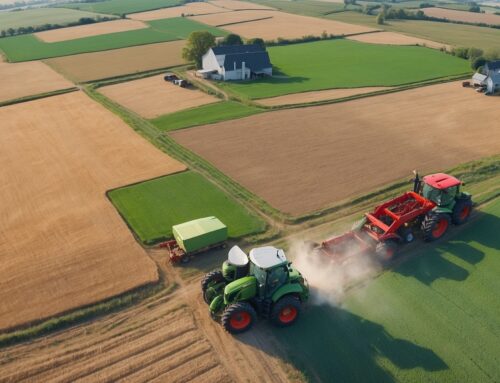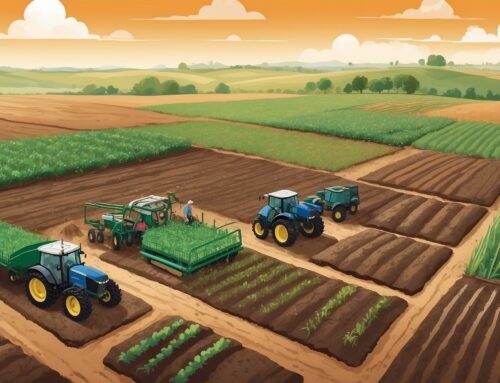Howdy there, fellow farmers! Today, let’s chew the cud on something we’ve all been thinking about. It’s a question that comes up every time we look at some shiny new gadget that’s supposed to save the farm, make us rich, and solve world hunger: Are soil moisture sensors really worth the investment? After all, there’s a lot of new tech out there, and we all know it’s pretty easy to end up buying a $2,000 piece of equipment that ends up collecting dust next to the old tractor parts in the shed (ours are a lot cheaper, FYI). So, let’s break it down, old-fashioned style—pros, cons, and the straight dirt on soil moisture sensors.
The Cost Conundrum
First things first, let’s talk money. Soil moisture sensors aren’t exactly free—they’re an investment. And for many of us, the idea of spending a few hundred dollars per sensor doesn’t sit quite right, especially when you could put that money into things you understand well, like fertilizer, a new piece of equipment, or that third cup of coffee to get you through a long day of work.
But here’s the thing: farming isn’t getting cheaper. Water, in particular, is starting to feel like liquid gold, and even though we’ve all done our fair share of rain dances, Mother Nature’s got a mind of her own. Irrigation costs are going up, and every drop that doesn’t get to the roots is money wasted. Soil moisture sensors are supposed to make sure you’re using just enough—not too little, not too much—to keep those crops happy.
So the question becomes, does investing in these sensors actually save you enough to make up for the upfront cost? The short answer is: it’s looking more and more like it does. But let’s break down the details so you’re not just taking my word for it.
The Value Proposition
The value of soil moisture sensors comes down to the good ol’ return on investment. Think about it like this: when you’re watering your fields without sensors, you’re either using too much or not enough most of the time—let’s face it, even the best of us have had moments when we watered more out of hope than knowledge. Too much water, and you’re wasting resources, possibly drowning your crops, and creating the perfect environment for pests. Too little water, and you risk stressing out your plants—and believe me, a stressed plant is not putting its best foot forward.
Soil moisture sensors help take the guesswork out of watering. These sensors tell you exactly how much moisture is in the soil at different depths. They help you understand if your plants’ roots are getting enough to drink without overdoing it. In the long run, these adjustments can mean reduced water bills, healthier plants, less fertilizer runoff, and ultimately, better yields.
Real-World Savings
I know some of you might be saying, “Yeah, but show me the savings, and not just in theory.” Fair point. Let’s look at an example. Imagine you’ve got a field of alfalfa. Traditionally, you might turn on the irrigation for a few hours based on what you think the field needs, but with soil moisture sensors in place, you can water only when the soil actually requires it. Over the course of a season, this can reduce water usage by up to 20-30%. That’s a pretty good chunk of change considering today’s water costs—and it’s not just about cost savings; it’s also about efficiency and sustainability.
And let’s not forget labor. How much time do you spend checking fields, fiddling with irrigation lines, or just trying to decide if today’s the day to water? With sensors, you get real-time data, and if you’re set up for it, you can automate parts of the process. Imagine sitting at the kitchen table, sipping coffee, and checking your soil moisture levels on your phone instead of tromping out into the field for the umpteenth time that day. Time saved is worth something, too—especially when there are a million other things demanding your attention.

Upfront Cost vs. Long-Term Benefits
So, are these sensors worth the price? If you’re farming in a region where water is scarce or costs are climbing, the answer is most likely yes. The upfront investment might sting a little, but the long-term benefits can be worth their weight in gold—or maybe more accurately, worth their weight in bushels of healthy crops. Plus, many places offer subsidies or grants to help farmers adopt precision ag technologies, which can help bring down those initial costs.
Another thing to consider is that soil moisture sensors can help support the health of your soil in general. By avoiding over-irrigation, you’re reducing the risk of nutrient leaching, meaning your fertilizers stay in the soil where they belong instead of getting washed away. Healthier soil means healthier crops, and healthier crops mean more yield and, you guessed it, more money in your pocket.
The Bottom Line
At the end of the day, investing in soil moisture sensors is a lot like investing in a good pair of work boots. Sure, you could get by with something cheaper, but you’ll probably end up spending more on replacements and dealing with sore feet along the way. Good boots—just like good sensors—make the work easier, save you time, and make you more efficient in the long run.
So, if you’re on the fence about whether or not these gadgets are worth it, think about how much time, money, and effort you put into trying to get just the right amount of water to your crops. Sensors help you get it right more often, and that’s worth its weight in gold—or corn, or soybeans, or whatever you’re growing this year. And hey, maybe you’ll even have a little extra left over for that third cup of coffee. Cheers, and happy growing!





